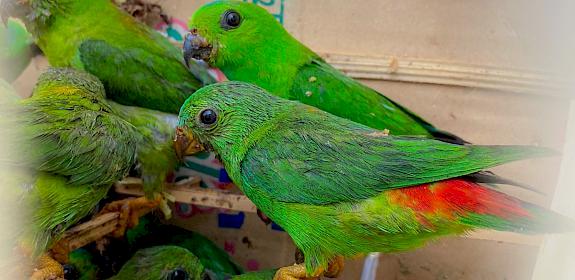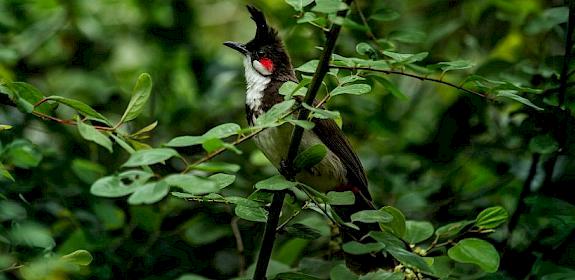
Helmeted hornbill Rhinoplax vigil © Sanjitpaal Singh
i
reversing devastating poaching
The Helmeted Hornbill Rhinoplax vigil is an iconic member of the hornbill family, once found throughout Myanmar, Thailand, Malaysia, Singapore, Indonesia and Brunei, but now devastated by poaching for its ivory casque.
The Helmeted Hornbill is unique in having a solid bill casque which can be carved and is frequently referred to as “hornbill ivory”. Despite being fully protected in their range States in Southeast Asia, numbers are increasingly being trafficked mainly to China, with Lao PDR acting as a transit point for hornbill ivory being sold in Lao PDR’s border towns with China
classified by the IUCN Red List as
Critically Endangered
Appendix I
international trade in Helmeted Hornbills and their products is banned under CITES
2,170
hornbill casques were confiscated from illegal trade in China and Indonesia in just three years
solid casque
the Hornbill's ivory casque is near solid, making it a desirable substance amongst ivory carvers
The driving factor of Helmeted Hornbill poaching is its solid ivory casque.
It has long been prized among carvers in Southeast Asia as the birds were once abundant across Range States and the ivory often simpler to procure than its elephant equivalent. Ornamental carvings and cups were traditional products made from the casque, but whose trade is now all but banned.
Carved Helmeted Hornbill casques for sale in Myanmar © C. Shepherd / TRAFFIC
i
related news, projects and reports to Helmeted Hornbills
explore our work and latest publications related to reversing the decimation of the Helmeted Hornbill
related reports to HELMETED HORNBILLS
Explore the latest publications, reports and papers from TRAFFIC related to the conservation of Helmeted Hornbills.
Visit our resource library for the full TRAFFIC publication archive.

Combating global wildlife cybercrime
Helmeted Hornbill ivory is often trafficked online as a collector's item to avoid detection by law enforcement. We're working with governments and industry the world over to shut down the opportunities for illicit wildlife traders to exploit online platforms.







